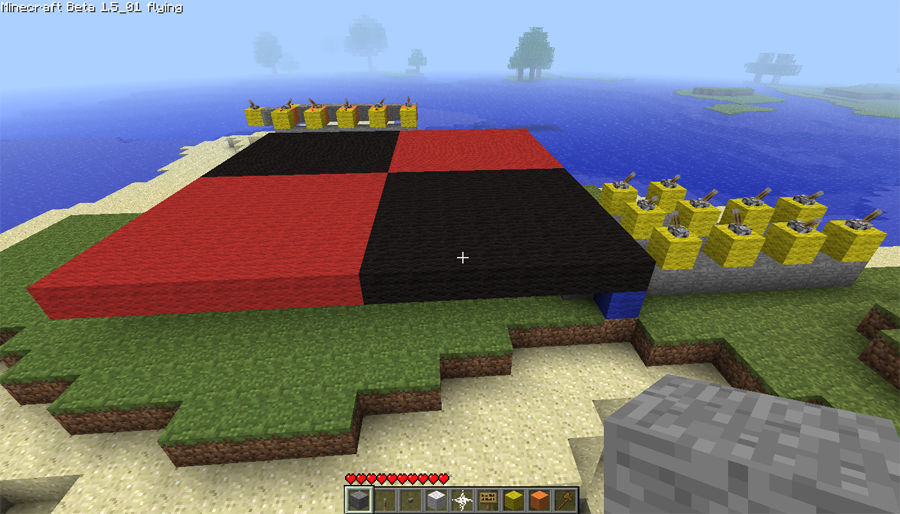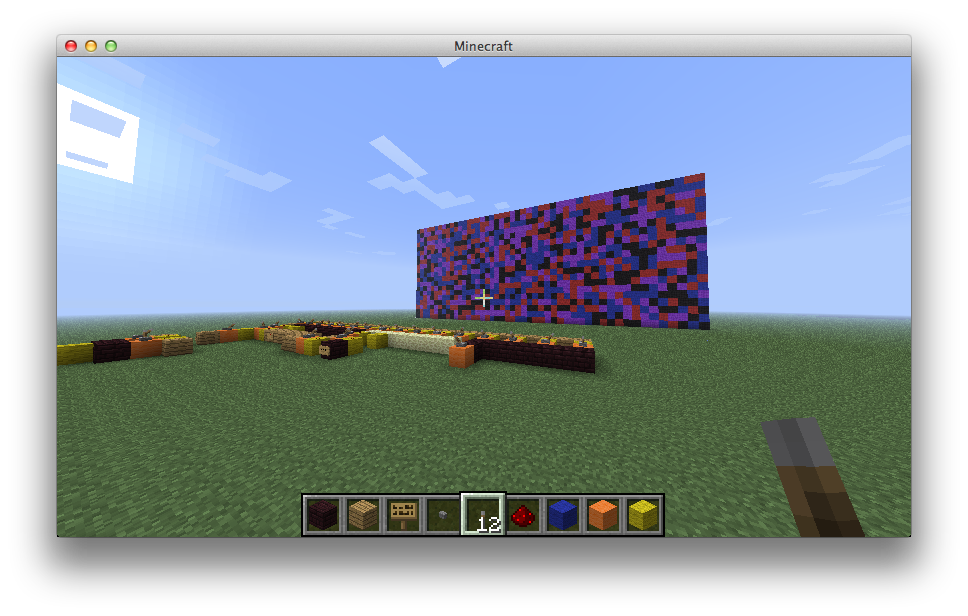display
Creates a wool display with individually addressable pixels.
This chip may be wireless, or use input blocks. To make a wireless version, do not attach any Input Blocks and specify a channel identifier as the last parameter on the sign.
This chip requires two Interface Blocks placed at opposite corners of the display, and a layer of wool making up the display. The display must be flat and can not be built at an angle. If the physical display is larger than the size specified on the sign, the size of the pixels will be adjusted accordingly. For example, if the sign states that the display is 10x10, and the physical display is 40x40, each pixel will be 4x4 wool blocks.
The first sign argument specifies the size of the display in the format <Width>x<Height>, for example “10x20”. If this argument is omitted the physical size of the display is used and each pixel will be 1 block wide.
Additional optional arguments are a color index as detailed in the pixel chip, and a channel identifier if the display will be wireless.
The number of inputs required will vary based on the size of the display and the number of colors specified, if any. The first input is the clock, and when turned on will cause the selected pixel to update. The next set of inputs is the X coordinate, and there must be enough input pins to express the X coordinate, for example 2 pins for a width of 4, 3 pins for a width of 8, 8 pins for a width of 256, etc. The next set of inputs is for the Y coordinate, and follow the same rules as the X coordinate pins. The final set of inputs are for the color. If a color index is used there must be enough inputs to represent the index, otherwise 4 pins are required.
The channel name can specify a start bit using the syntax <channel name>:<start bit>.
Direct memory access
The chip can directly access the contents of a memory by specifying a memory id argument in the syntax of $<memory-id>. In this mode the chip inputs, from the 2nd and above, set the ram page that will be displayed on the screen. Each memory address is mapped to one pixel. The memory word length should match the color bit length of the display chip.
The screen will automatically update whenever the memory contents are changed.
See the circuitdocs for sram for more info about RedstoneChips memories.

Color names and ids (Color names are case insensitive)
- 0: White
- 1: Orange
- 2: Magenta
- 3: Light_blue
- 4: Yellow
- 5: Lime
- 6: Pink
- 7: Gray
- 8: Silver
- 9: Cyan
- 10: Purple
- 11: Blue
- 12: Brown
- 13: Green
- 14: Red
- 15: Black
I/O setup
- Input 0 is clock pin.
- Requires two Interface Blocks at opposite corners of the display area.
In pixel set mode:
- X inputs for the X coordinate.
- Y inputs for the Y coordinate.
- C inputs for color.
In direct memory access mode:
- 2nd input and above are ram page select pins.
Sign text
display<width>x<height>(optional)colors(optional)<broadcast channel>[:<start bit>](optional)$<memory id>(optional)

Version history: Added to BasicCircuits 0.92
